Cargando...
Recursos educativos
-
Nivel educativo
-
Competencias
-
Tipología
-
Idioma
-
Tipo de medio
-
Tipo de actividad
-
Destinatarios
-
Tipo de audiencia
-
Creador
-
Initial evaluation 04 - Living things
EduBook Organización
- 1507 visitas
Find an example for each category in the list below: Animals: Invertebrates: Annelids: Molluscs: Arthropods: Vertebrates: Fish: Amphibians: Reptiles: Birds: Mammals: Plants: Fungi:
-
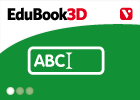
Initial evaluation 02 - Animals
EduBook Organización
- 4024 visitas
Write true (T) or false (F) for each sentence. Invertebrates have bones. ➝ Sea anemones and jellyfish are cnidarians. ➝ Sponges live in the water. ➝ Sea urchins and worms have bilateral symmetry.…
-
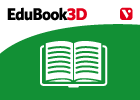
Before you start - Animals
EduBook Organización
- 1 lo usan
- 2942 visitas
Didactic objectives Understand how animals are classified as vertebrates and invertebrates. Recognise the main characteristics of invertebrates including sponges, cnidarians, echinoderms, worms,…
-
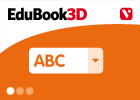
Initial evaluation 1 - The Animal Kingdom (II). Vertebrates
EduBook Organización
- 2962 visitas
Are the following sentences true or false? All vertebrabtes have teeth. The squid is a vertebrate in the fish family. There are five main groups of invertebrates. Vertebrates are animals with an…
-
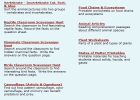
Website: Animals worksheets
Superteacher worksheets Organización
- 6 lo usan
- 3249 visitas
This web page contains a set of printable worksheets (PDF) designed to help us learn about vertebrates, invertebrates, and animal classifications. Each worksheet contains a text and comprehension…
-
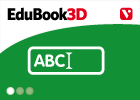
Final self-evaluation 07 - Animals
EduBook Organización
- 2373 visitas
Decide which of the following characteristics belong to vertebrates and which belong to invertebrates: Internal skeleton. ➝ Three pairs of legs. ➝ Spine. ➝ Cranium which protects the brain. ➝…
-
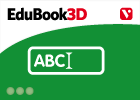
Check what I know
EduBook Organización
- 1929 visitas
Complete the sentences: Invertebrates do not have a s. An e is an annelid. M have a shell. Arthropods have an e. Insects have six l. All arthropods are i.
-
The removal of cell waste
EduBook Organización
- 2421 visitas
4.1. What does excretion consist of? Cell activity produces waste products like carbon dioxide or urea. These substances are toxic for the organism if they accumulate. The function of excretion is…
-
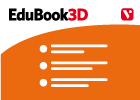
Animal reproduction
EduBook Organización
- 13844 visitas
Reproduction is the only vital function that is not needed to keep an individual alive. It ensures the continuation of the species. Although sexual reproduction is a universal characteristic of animals,…
-
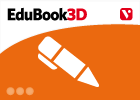
Think about it. Asexual reproduction in animals
EduBook Organización
- 4973 visitas
Remember what you have studied in this section and answer the questions: What is a bud? Describe two types of budding and name animals that reproduce each way. Which invertebrates reproduce by…
Te estamos redirigiendo a la ficha del libro...













